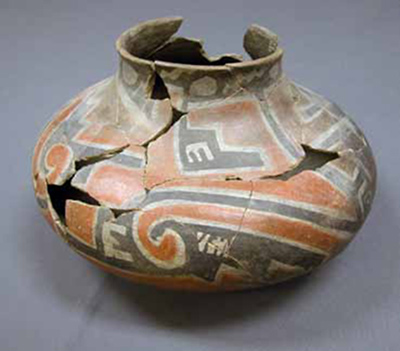The spread of the Salado Polychrome iconography across the region may have been a response to environmental and cultural changes during the period of A.D. 1250-1450. Regional and local environmental crises, such as droughts, would have increased the uncertainty of food production, which, in turn, would have exaggerated social inequalities, unequal access to resources, and unequal distribution of wealth (Dean 2000).

NPS
Many communities were mobile during this period, causing different social group interactions, ethnic mixing, and the displacement of established groups in the region. These changes would have required the development of new methods for incorporating immigrants into established communities, interacting with other social groups, managing internal and external disputes, and organizing multiethnic communities (Dean 2000).
In the 1990s, Patricia Crown identified the Regional Salado Phenomenon as a regional religious cult. Crown (1994) suggests that the appearance of Salado Polychrome wares across the Southwest and into Mexico was the expression of a regional religious system. In her view, the pottery represents the symbolic expression of a religious or ideological movement she calls the “Southwestern Cult.” Through her research, Crown determined that Salado Polychrome vessels were often locally made at the sites where they were found and not imported. She suggests that people across the southern Southwest were adopting new symbols representing a new religious belief system and expressing this adoption through ceramic manufacture and display.
The pan-regional adoption of Salado wares could have facilitated community and individual adaptation to local and regional competition and perhaps conflict. Dean (2000) suggests that the spread of the Katsina Cult to the north of the Tonto Basin through the distribution of Jeddito Yellow Ware ceramics and design styles may represent a parallel northern response to similar environmental problems faced by the southern groups during the Late Classic Period in the Southwest. However, unlike the spread of the Katsina Cult, which was traceable because all Jeddito Yellow Ware was produced in and disseminated from a single area in the Hopi Mesas, the local “copying” of Salado style in the 130,000-square kilometer area of the Salado Phenomenon may forever prevent archeologists from identifying how the Southwest Cult was organized as a system or how it was spread through the region.
Part of a series of articles titled Salado Overview.
Last updated: August 14, 2017
